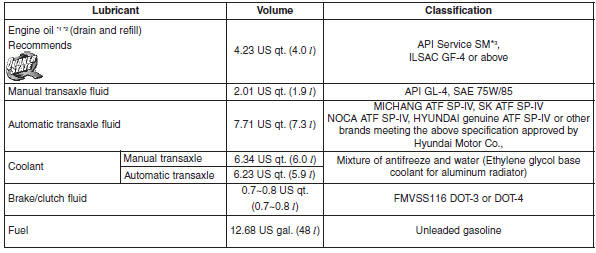
Hyundai Elantra Owners Manual
Recommended lubricants and capacitiesSpecifications, Consumer information, Reporting safety defects / Recommended lubricants and capacities
To help achieve proper engine and powertrain performance and durability, use only lubricants of the proper quality. The correct lubricants also help promote engine efficiency that results in improved fuel economy.
These lubricants and fluids are recommended for use in your vehicle.




┬® 2026 www.hyundaielantramanual.com. All Rights Reserved.



